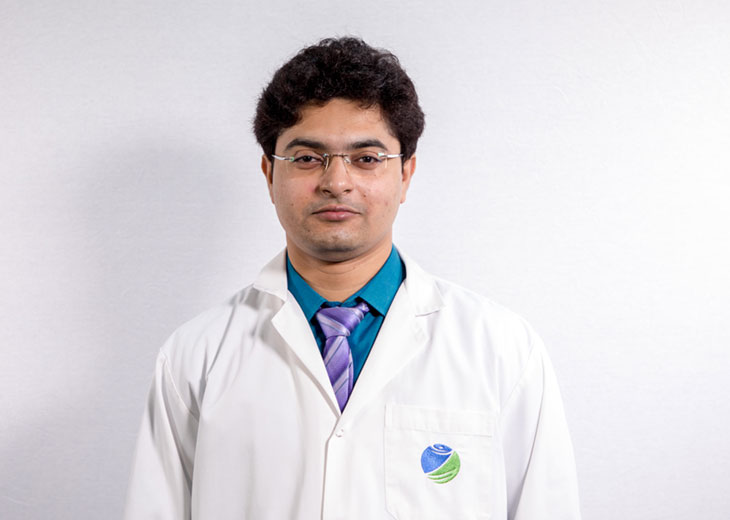A patient at Zulekha Hospital Dubai who recently gave birth by lower segment caesarean section (LSCS) was diagnosed with May-Thurner syndrome just a few weeks after. The Indian expat aged 32, initially developed pain and swelling in the left leg three weeks after delivery. She was at risk of developing chronic venous insufficiency of the left leg, which, if not treated may lead to prolonged pain, swelling and even the development of venous ulcer. There was also a remote risk of pulmonary embolism.
The disease is a rare condition of deep vein thrombosis which occurs in the left leg and is due to a rather common anatomic variant – seen in 20% of patients– where the right iliac artery compressed left iliac vein.
After the May-Thurner syndrome diagnosis was confirmed by CT venogram, Dr. Amritendu Mukherjee, Specialist Interventional Radiology & Neuroradiology at Zulekha Hospital, Dubai, completed a Pharmacomechanical Thrombectomy and left common iliac vein stenting over the course of seven hours. The doctor restored the venous flow in lower left limb while preventing any clot migrating to the lung circulation during the process – an IVC (Inferior Vena Cava) filter was placed to prevent this.
“May Thurner syndrome is a very rare disease and the facilities in order to treat this are only available in few hospitals across the UAE. The main challenge in this case is the maintenance of the patency of the stents in long term. This is achieved through an active lifestyle, avoiding prolonged immobilization, regular follow- up and intervention at the earliest in case of detection of re-thrombosis. Some of these cases may require a long term treatment for blood thinning,” Dr. Mukherjee commented.
The thrombosed vein in the patient’s limb was accessed under ultrasound guidance and a pump device named Angiojet was used to soften the clot by spraying recombinant tissue plasminogen activator and later the clots were aspirated using the same device. In the later stages, the stenotic area was crossed with a microcatheter and microwire combination, progressively dilated by balloon angioplasty and then opened completely using three overlapping self-expanding stents.
Patients who have May-Thurner type of vessel configuration can develop DVT after a precipitating factor such as pregnancy or prolonged immobilization.
The patient commented: “Before the surgery, it was very difficult to walk or stand as I had severe pain in my leg. Now I feel relieved after having gone through a lot of pain. With a baby now, it is essential for me to be moving around and managing the baby and myself independently. Thanks to the doctors at Zulekha Hospital, Dubai for diagnosing the problem after my delivery and for treating it in time.”
The patient will be kept on long term anticoagulation to thin the blood and will attend regular follow-up scans.



